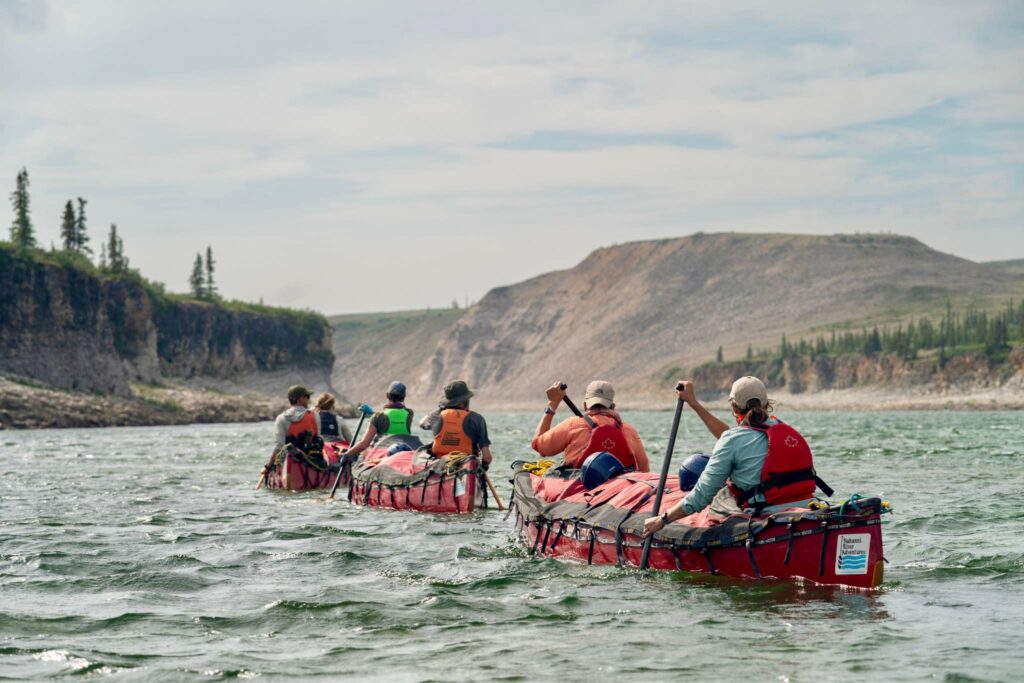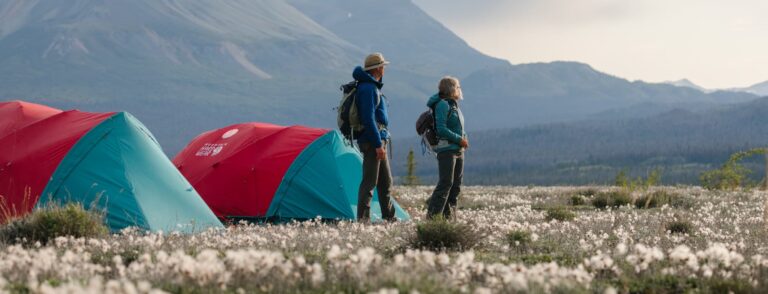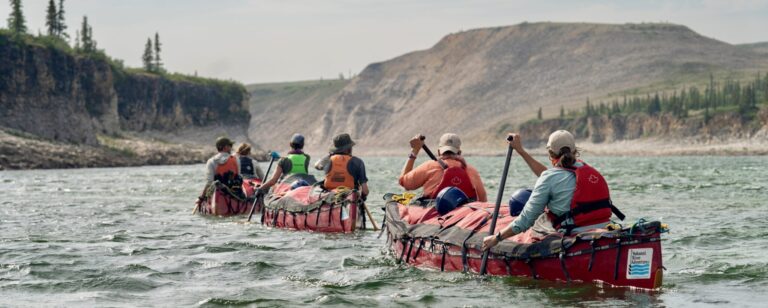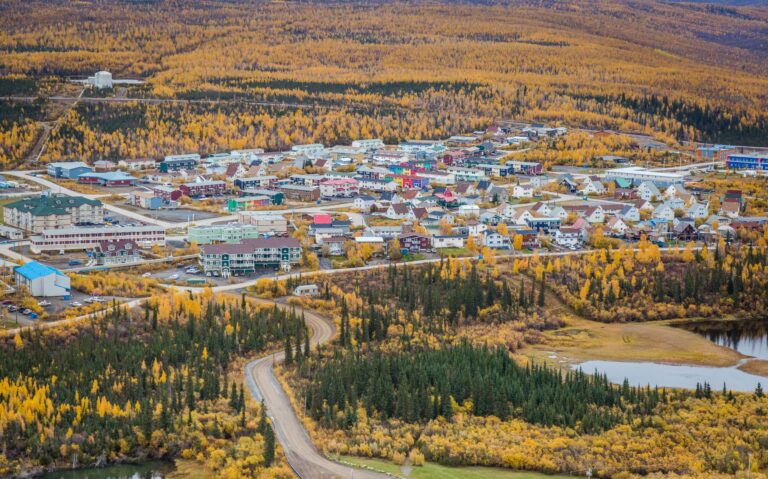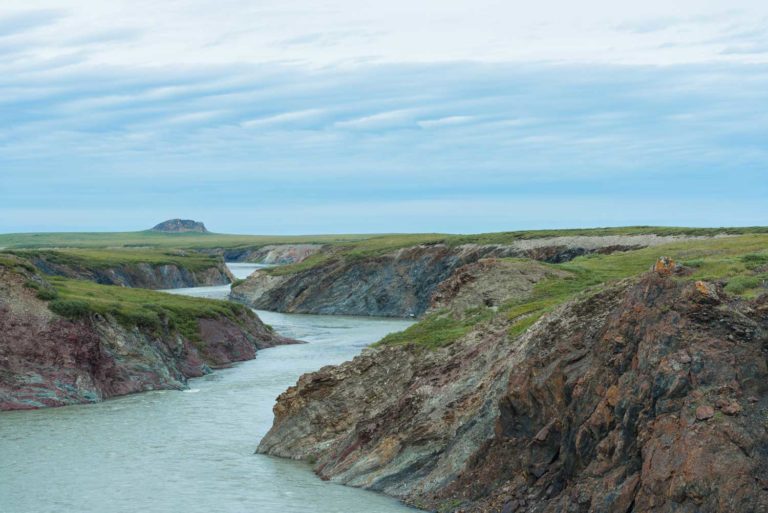A Hidden Gem of the Arctic
Coursing deep into Canada’s North, the Horton River flows from a small lake in the Northwest Territories to the wild sprays of the Arctic Ocean. Far above the 60th parallel, this majestic waterway distinguishes itself as mainland Canada’s most northerly river.
For those unfamiliar with Canada’s vast geography, the Northwest Territories is a sprawling region that spans the uppermost portions of the country, nestling itself between the cold embrace of the Arctic Ocean and the northern borders of the provinces below.
Imagine a place where the summer sun lingers in the sky well into the night, where the Northern Lights paint the heavens with vivid colors, and where vast, uninterrupted landscapes stretch as far as the eye can see!
If you were to pinpoint its location, it lies closer to the North Pole than to the bustling cities of southern Canada, marking it as a truly exceptional destination for those seeking untouched wilderness and adventure.

Why the Horton? An Authentic Wilderness Experience
For paddling enthusiasts, the Horton River presents an unparalleled opportunity to experience the untouched beauty of the Arctic’s wilderness.
Unlike its more renowned counterparts, the Horton receives few visitors each year. Weaving its way past the mystifying Smoking Hills, it opens up to reveal vast stretches of tundra where iconic northern species roam the plains.
The river’s seclusion ensures a journey of wild serenity, where nature’s enigmatic symphony is only interrupted by the strokes of your paddle and whispers of the Arctic wind. Paddling the Horton is not just about the thrill of Arctic navigation, but also the complete immersion into a realm where time seems to stand still.
Perfect for those seeking to experience isolation, untamed nature and unique landscapes, this little known treasure offers a immersive escape into nature with breathtaking vistas at every bend!
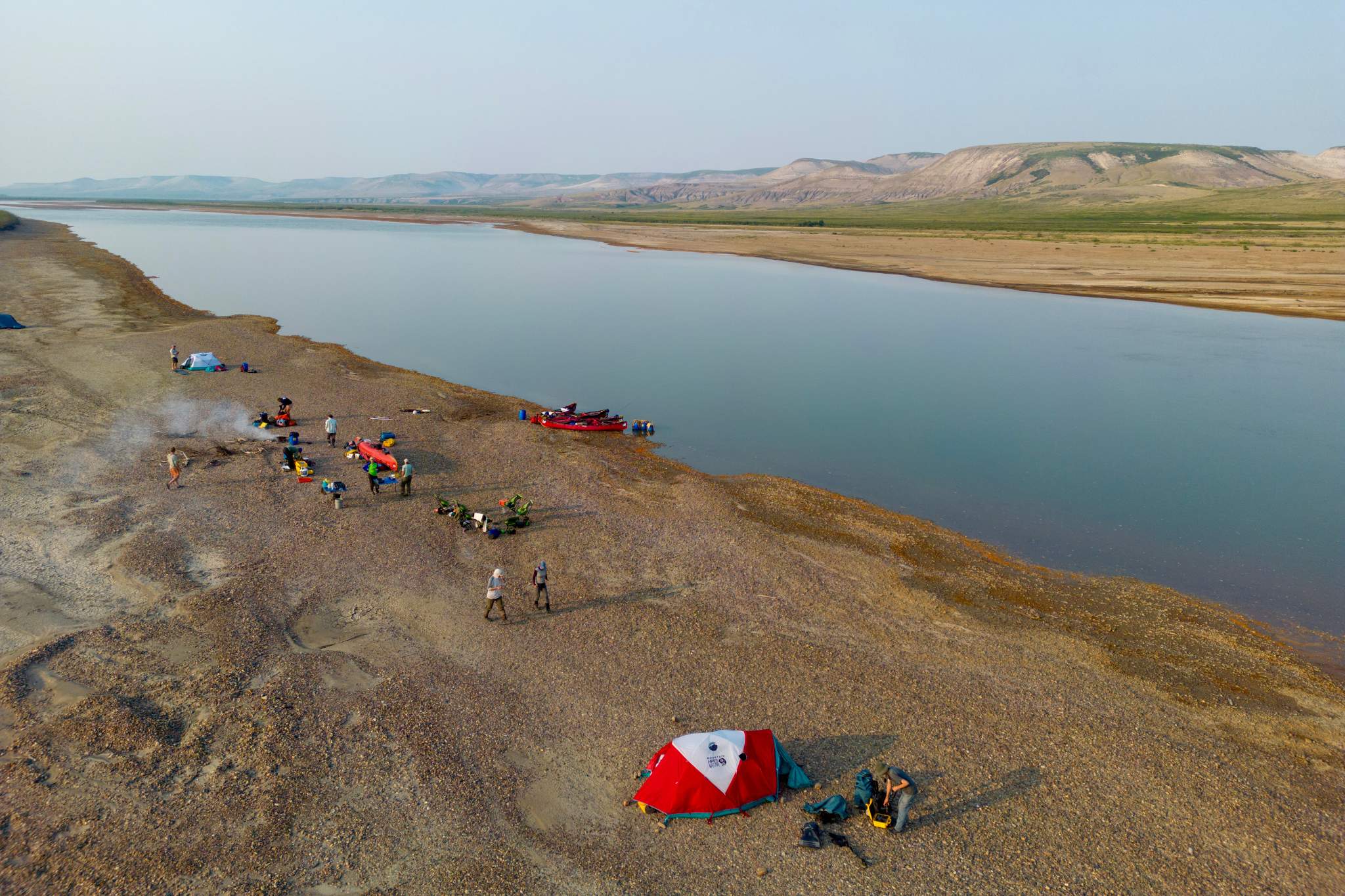
Getting to the Horton River: An Immersive Northern Adventure!
Your expedition begins in the town of Inuvik, situated along the Mackenzie River in the NWT. Well above the Arctic Circle, you will be immediately immersed in the tranquility of the area.
Far from the hustle and bustle of urban life, Inuvik offers a unique atmosphere which sets the stage for your expedition. Take the time to settle in and absorb the natural beauty surrounding you.
The real journey kickstarts with a briefing at the Midnight Sun Complex where you will meet your Trip Leader. The anticipation builds as you finalize the last preparations for the Arctic adventure ahead!
When the next day dawns, you will board a charter flight, which offers a bird’s-eye view of the mesmerizing tundra below. This aerial trip not only brings you closer to the Horton River but gives you a hint of the breathtaking landscapes which await!

A River for All Skill Levels: Paddling the Horton River
The Horton River promises an unforgettable experience for paddlers of all skill levels, from novices to seasoned canoeists. With its gentle, forgiving waters, the Horton is the ideal destination for those new to paddling or for more experienced canoeists seeking a unique Arctic tundra experience.
Though the waters are calm, participants should be mindful of the expansive landscapes and isolation that come with venturing into such remote wilderness. Our world class guide team will ensure you have a safe and indelible experience, well fuelled by wanderlust and our award winning menu!
Paddling Skills
To fully enjoy and safely navigate the river, prior canoeing experience is required. Familiarity with basic paddling strokes such as the bow, reverse, “j”, draw, pry, and sweep will enhance your expedition. Whether you’re adept at partnering up in the bow, or you possess river-reading skills and can deftly steer from the stern, your past experiences will play a pivotal role in navigating the Horton’s currents and getting the most out of your journey.
Our Skill Prerequisites page is full of helpful pointers.
You can also reach out any time via phone or email – our friendly Expedition Planning Team are always delighted to connect and answer any questions you may have!
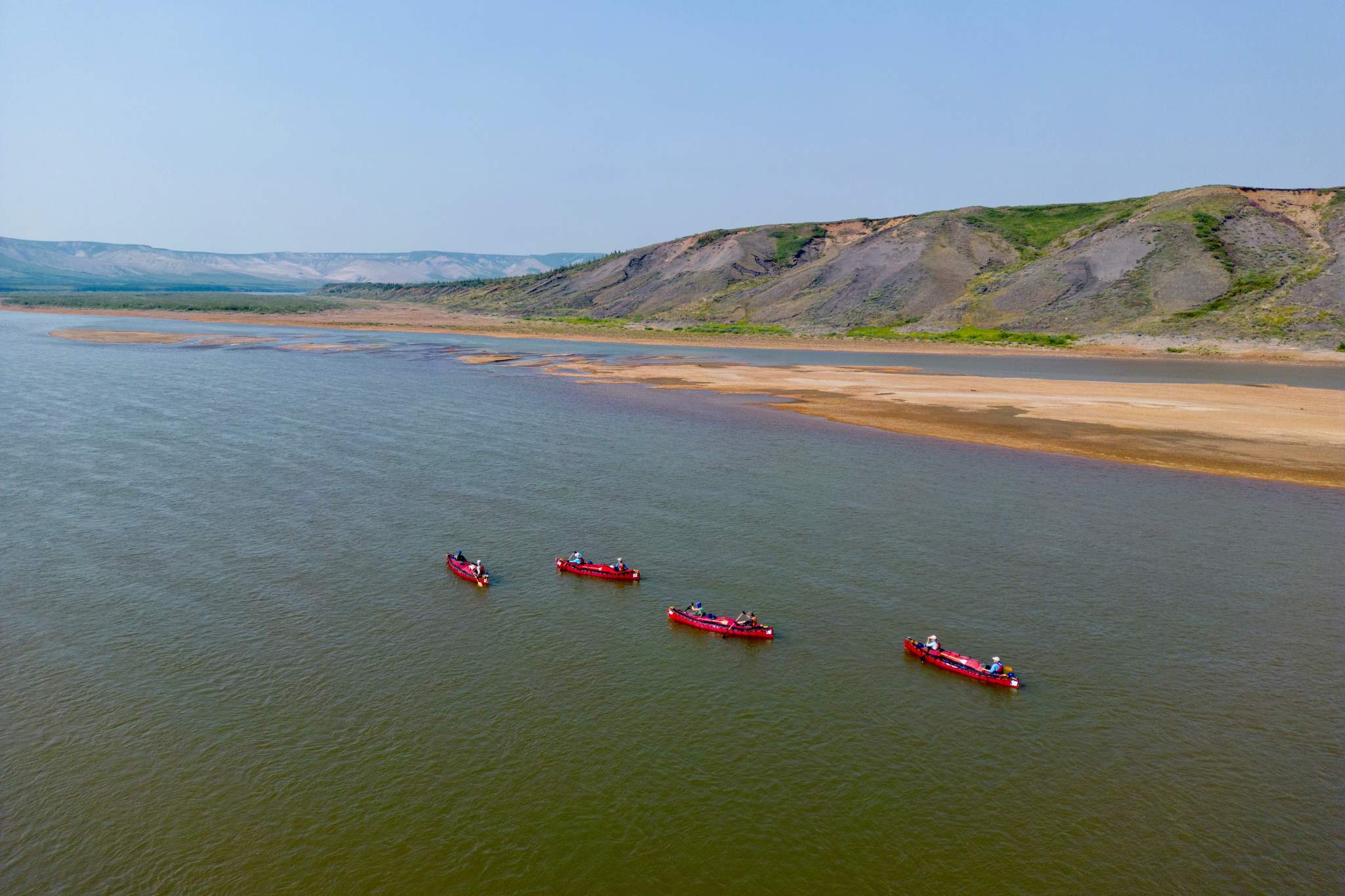
Geographic Highlights of the Horton River
The Horton River is not just a waterway, but a tapestry of geological wonders and unique terrains carved over millennia which will amaze seasoned geologists and first time Arctic adventurers alike!
Here are a few of the standout geographic features you will encounter:
- The Smoking Hills: Located near the river's mouth, the Smoking Hills are named for the mysterious smoke which arises from them, caused by the spontaneous combustion of lignite (a form of coal). This captivating phenomenon gives the hills an ethereal appearance, creating an intriguing atmosphere for canoeists.
- Wooded Valleys and Tundra: Vast stretches of tundra interspersed with lush, wooded valleys create a mosaic of diverse landscapes, showcasing the Arctic's stunning biodiversity.
- Coastal Badlands: As one approaches the Arctic Ocean, the terrain morphs into a rugged badland landscape, sculpted by millennia of exposure to the elements.
- Frost Polygons: A unique feature of the Arctic tundra, these intriguing patterns can be spotted from the air and are formed due to the freeze-thaw cycle of the ground.
- Franklin Bay and Amundsen Gulf: The Horton River flows into the Beaufort Sea, creating a grand finale for adventurist paddlers. A short hike provides indelible views of Franklin Bay and the wider Amundsen Golf. The area is home to abundant marine life and grants the chance to spot beluga whales!

Flora and Fauna: A Sentinel for Arctic Biodiversity
Nestled in the untouched Arctic tundra, the Horton River boasts diverse ecosystems and a rich biodiversity. The stunning display of fauna and flora showcase nature’s resilience in such harsh conditions, with many of the plant and animal species thriving in the cold climate.
Whether you are an avid wildlife watcher, seasoned outdoor enthusiast or simply curious about the Arctic’s unique ecology, canoeing the Horton offers the chance to witness nature at its most raw and unspoiled.
Flora: The river’s banks are adorned with a mix of tundra vegetation. Dwarf shrubs, including varieties of willow and birch, are common, alongside colorful Arctic wildflowers like the Arctic poppy, purple saxifrage, and mountain avens. Mosses and lichens, essential to the tundra ecosystem, form thick carpets in various areas, providing vital insulation to the ground beneath.
Fauna: The region is home to wild variety of wildlife, both large and small. Paddlers might spot majestic caribou herds grazing nearby or a solitary muskox bull with its shaggy coat. The keen-eyed might even catch a glimpse of Arctic wolves or elusive grizzly bears. The river itself is abundant with fish, including arctic grayling and char. Above, the skies are often graced by raptors like the peregrine falcon and the gyrfalcon, soaring high or nesting on the cliffs. And, of course, the myriad of smaller creatures, from Arctic hare to lemmings, play their part in this intricate web of life.
Fungi: Though often small and inconspicuous, fungi play pivotal roles in the Arctic’s myriad ecosystems, from decomposition and carbon storage, to nutrient and energy cycling. Many Lactarius, Agaricus and Russula species found in more southerly alpine regions also inhabit the tundra, surviving the sub-zero temperatures thanks to the anti-freeze proteins they produce in their cells. They also use these proteins to thaw the surrounding soil to allow nutrient uptake and growth!
Lichens: Perhaps the Arctic’s most iconic fungi, lichens are symbiotic relationships between fungi and algae. These hardy organisms paint the tundra in bright hues of reds, oranges and greens and are vital in nutrient cycling – particularly nitrogen fixation – as well as providing food sources and nesting materials for animals. Reindeer Lichen or White Moss (Cladonia rangiferina) is the prime food source for Caribou, providing them with the fuel they need for their awe-inspiring migrations.


An Angler’s Dream
The Horton River is a dream destination for anglers, offering exceptional freshwater fishing opportunities. Set against the dramatic beauty of the tundra, its crystal clear waters are largely untouched by humans and teem with aquatic life, promising a bountiful haul for those who choose to venture into its waters. A genuine Arctic angling adventure, the Horton rewards with not just the thrill of the catch but also the serenity of fishing in one of the world’s most pristine and untouched wildernesses.
Fish Species: Whether you are a seasoned pro or new to the sport, the Horton’s diversity and abundance of fish species provide an exciting location to hone your skills and land your dream catch. The river is renowned for its abundant populations of Arctic grayling, known for their distinctive dorsal fins and vibrant hues. Anglers can also find the hard-fighting Arctic char, a favorite among many for both its spirited resistance and delicious taste. Lake trout are another prized catch, often making their way into the river from surrounding lakes.
Best Times to Fish: While fishing is productive throughout the paddling season, the peak times are during the summer months of July and August. This offers the best time to catch char, as they begin their epic migrations from the sea to spawn.
Techniques and Gear: Fly fishing is a popular method on the Horton, with many anglers favoring dry flies or nymphs to mimic the local insect life. However, for those targeting larger species like the lake trout, spinning gear with lures can also be effective. Due to the river’s clear waters, lighter lines and natural-colored lures or flies are often recommended.
Catch and Release: To preserve the river’s rich biodiversity and ensure future generations can enjoy the same thrilling fishing experiences, catch and release is highly encouraged. Using barbless hooks and handling fish with care ensures their survival upon release.
More info on fishing on our river journeys can be found here.
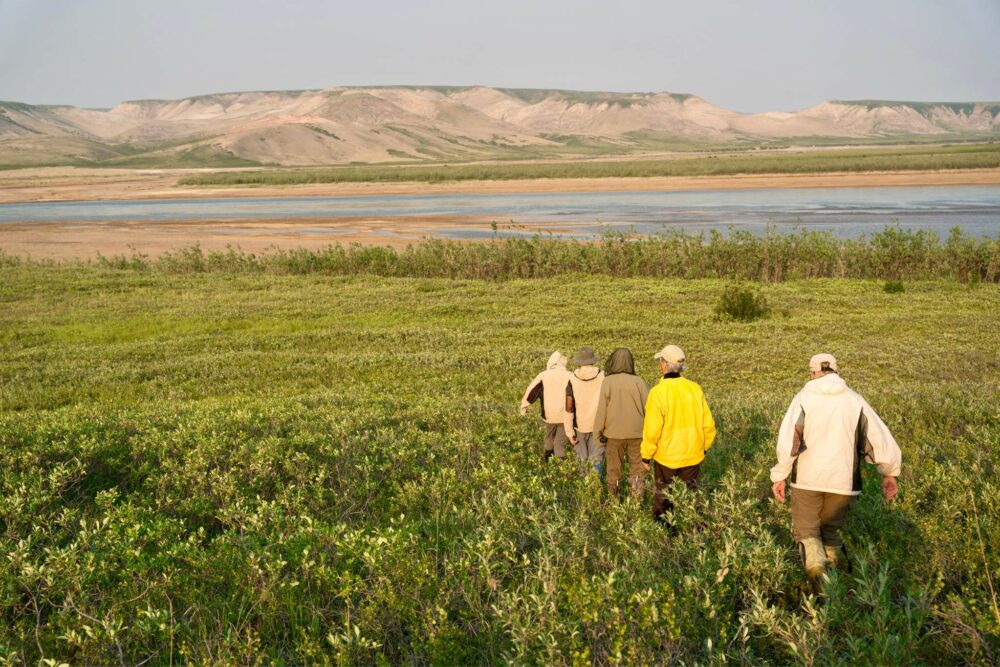
Weather on the Horton River
When picturing Canada’s northern territories, many imagine a frozen, snowy expanse year-round. However the summer months offer a unique and inviting climate, particularly in July when the Arctic’s brief but vibrant summer reaches its zenith.
Daytime average temperatures in July hover around 10°C to 20°C (50°F to 68°F), though occasionally they may climb much higher. Later in the summer months the nights can be cool, so it’s crucial to be prepared for a range of temperatures.
However, while the temperatures are milder in July, it is important to be aware of the variable weather patterns. Rain is possible, so packing waterproof gear is essential. Winds can also be a frequent companion on your journey, occasionally picking up speed and making for chillier conditions, so ensure you pack a puffer jacket and several warm layers.
These variable conditions, along with the Horton’s pristine ecosystems, meaning insect populations are healthy along the river. Packing bug repellant, a head net or bug jacket and long-sleeved clothing are recommended. We will bring a bug shelter to provide a comfortable space to dine and relax in should it be needed.
Our helpful packing guide will provide you with all the information you need.
The Magnetic Energy of the Midnight Sun
The river’s northerly latitude brings one of its most enchanting summer features: the Midnight Sun. The magnetic energy experienced under the 24-hour daylight provides an atmosphere ripe for adventure, perfect for outdoor lovers to soak up the expansive landscapes and participate in activities well into the evenings. This summertime phenomenon truly makes for an unforgettable river trip, allowing you to make the most out of every hour spent along the banks of this Arctic gem.
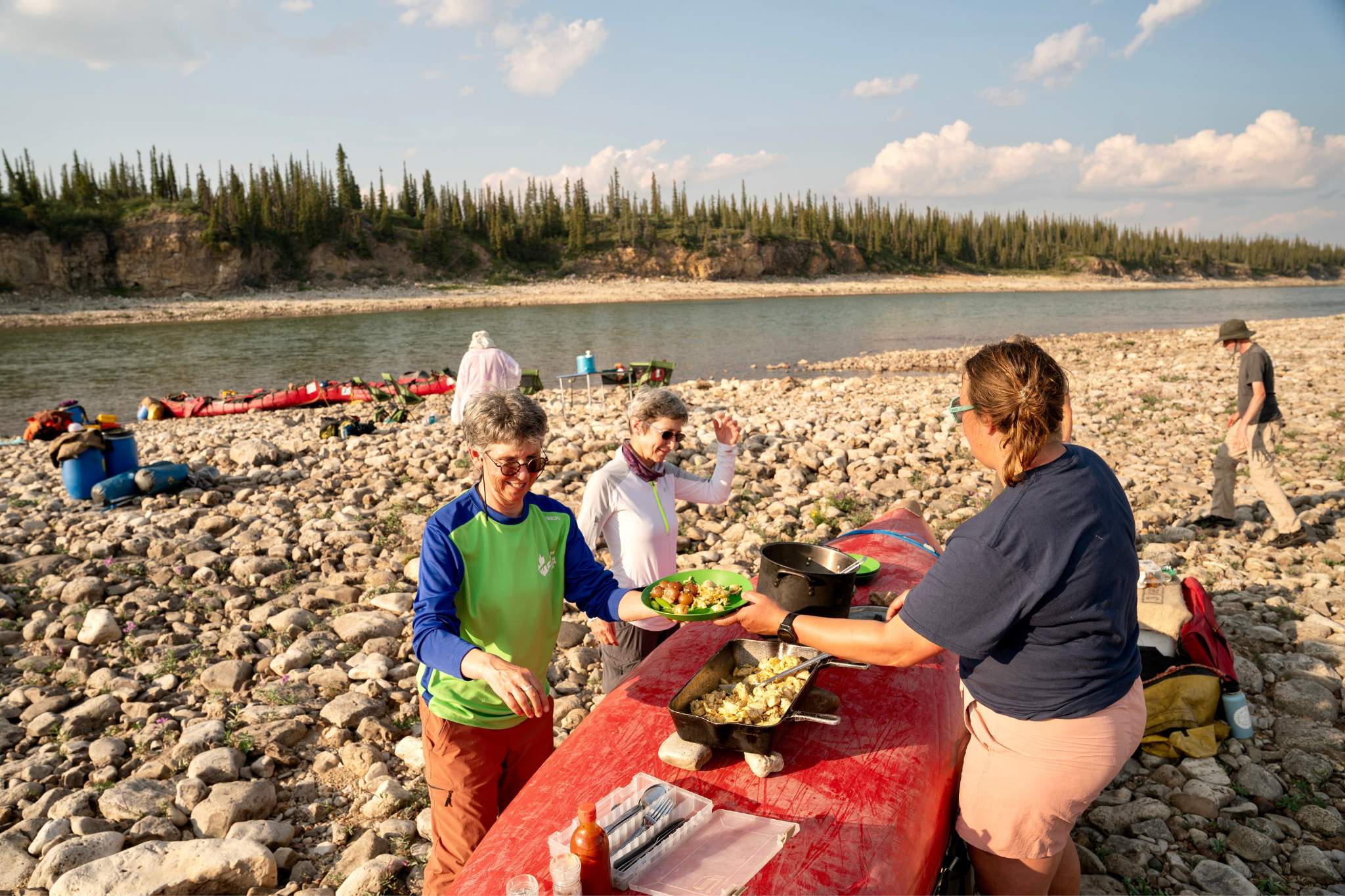
A Perfected Itinerary for Your Arctic Adventure
From our first flight across the tundra to our farewell supper in Inuvik, each day offers fresh adventure. Whether you’re hiking through the enchanted landscapes of the Smoking Hills, spotting the Franklin Bay’s iconic beluga whales, or simply sitting by the campfire under the vast Arctic sky, our Horton River Canoe Expedition promises an immersive and indelible adventure. Our carefully curated itinerary, honed after decades of experience, is designed to create a fulfilling and inspiring journey through one of the world’s most remote and unique wilderness areas.
- Day 1: Flight into the tundra: Gliding over the breathtaking landscapes beneath gives us a riveting opportunity to gain perspective on the remote wilderness we are about to venture into. Look out for those captivating frost polygons on the ice!
- Day 2: Delving into the Horton: Embrace the vastness of the barren lands. Let our expert guides help you view and interpret the intricacies of the surrounding landscapes.
- Days 3 - 9: Blooms and Beasts: The treeless tundra presents the perfect opportunity for hiking and wildlife spotting. We might see raptors, caribou, bears, musk oxen or even wolves!
- Day 10: Into the Badlands: Marvel at the geological wonders of the Smoking Hills, an enigma of colors and textures.
- Day 11: Smoking Hills and Meandering Rivers: As we paddle through the Horton's ancient bends, we near the ocean and camp where fresh, coastal breezes beckon.
- Day 12: To the Arctic Ocean: Embark on a hike to find active vents and have the chance to spot Beluga whales in Franklin Bay.
- Day 13: Return to Civilization: As our aircraft returns us to Inuvik, the town provides a moment to reflect on your journey and adapt back into the rhythms of modern life. Take a moment to explore this charming town and share incredible memories with newfound friends.

Why Choose Nahanni River Adventures & Canadian River Expeditions?
Since our beginnings in 1972, we have cultivated unparalleled river expeditions, boasting a 40% guest return rate. Our handpicked guides, celebrated for their expertise and passion, ensure an enriching journey. This is further enhanced by our minimum guide to guest ratio of 1 : 4, allowing you to enjoy the journey in safety and comfort whilst we take care of the details.
Every day brings new gastronomic delights, from aromatic cinnamon buns to delectable Arctic char. Prioritizing safety and local engagements, we’re committed to providing genuine cultural insights where possible while championing northern conservation efforts.
With unwavering support and a treasure trove of regional knowledge, we promise an unforgettable, once-in-a-lifetime Horton River adventure!
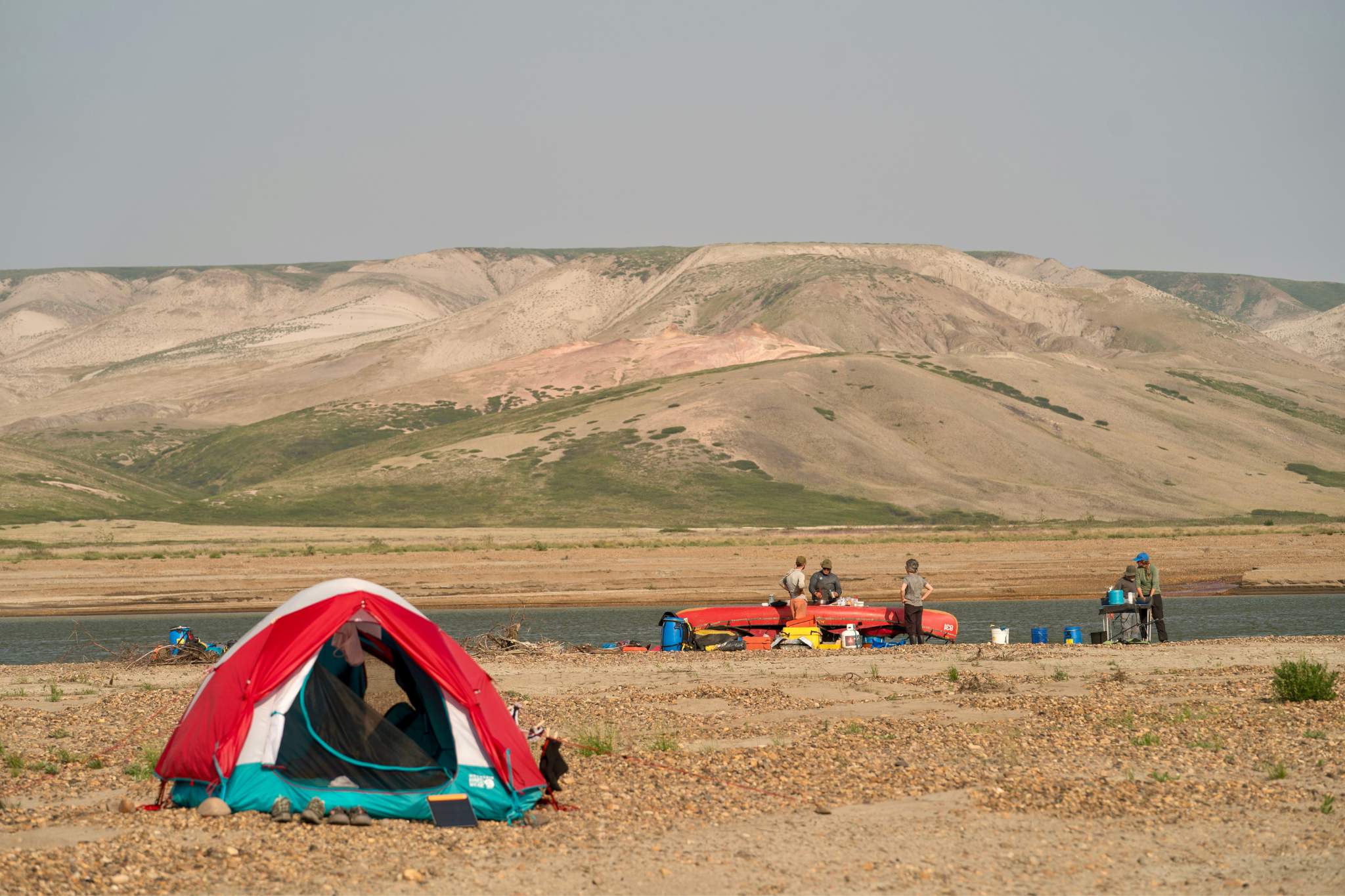
Get in touch!
Are you feeling the pull of the Arctic’s wild allure? If the breathtaking landscapes, exhilarating wildlife encounters, and the serene currents of the Horton River have sparked your wanderlust, dive deep into your next big adventure and Request more information.
Our friendly Expedition Planning Team are here to provide you with detailed insights, answer your burning questions, and help you embark on a journey that promises memories for a lifetime.

